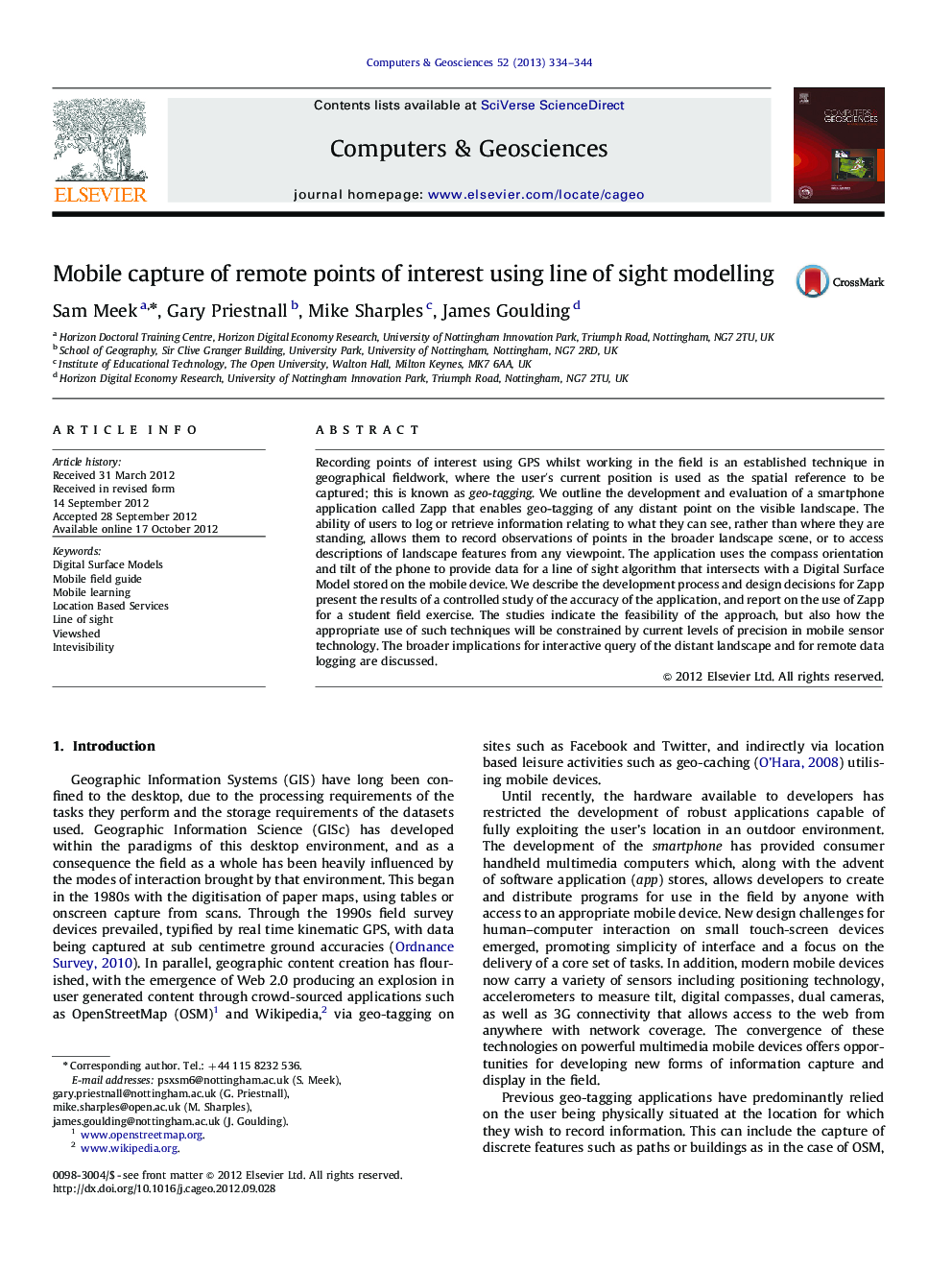| کد مقاله | کد نشریه | سال انتشار | مقاله انگلیسی | نسخه تمام متن |
|---|---|---|---|---|
| 507919 | 865152 | 2013 | 11 صفحه PDF | دانلود رایگان |

Recording points of interest using GPS whilst working in the field is an established technique in geographical fieldwork, where the user′s current position is used as the spatial reference to be captured; this is known as geo-tagging. We outline the development and evaluation of a smartphone application called Zapp that enables geo-tagging of any distant point on the visible landscape. The ability of users to log or retrieve information relating to what they can see, rather than where they are standing, allows them to record observations of points in the broader landscape scene, or to access descriptions of landscape features from any viewpoint. The application uses the compass orientation and tilt of the phone to provide data for a line of sight algorithm that intersects with a Digital Surface Model stored on the mobile device. We describe the development process and design decisions for Zapp present the results of a controlled study of the accuracy of the application, and report on the use of Zapp for a student field exercise. The studies indicate the feasibility of the approach, but also how the appropriate use of such techniques will be constrained by current levels of precision in mobile sensor technology. The broader implications for interactive query of the distant landscape and for remote data logging are discussed.
► A line of sight algorithm is implemented on mobile devices for remote point of interest capture and query.
► We perform a systematic test to ascertain errors of POI capture and a user study to test usability.
► Total error of POI capture has a very strong correlation with distance.
► A large proportion of error is due to differences between the underpinning surface model and real world.
► The system is stable, usable and has potential for use in a tourist and educational context.
Journal: Computers & Geosciences - Volume 52, March 2013, Pages 334–344